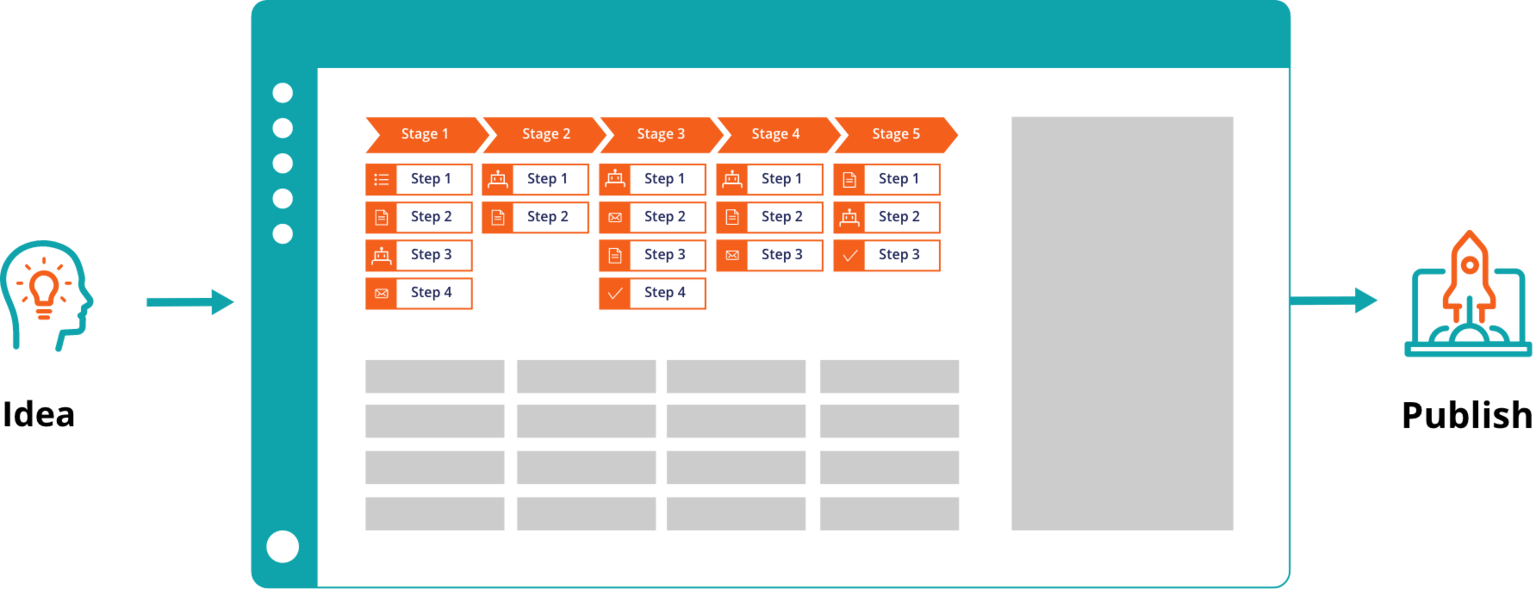
Low-code application development

What is low-code application development?
Low-code application development describes creating application software using visual tools and model-driven processes – instead of traditional code-based programming. It reduces the amount of hard coding needed, enabling democratized access to development and an accelerated delivery of apps. A low-code platform can range from a simplistic, free software you can use online to a sophisticated, enterprise-grade application development engine that serves the most complex and highly governed processes.
How low-code solutions benefit both business and IT
Business users
- Enable users who are fluent in evolving business needs to get involved in development – with no coding knowledge needed
- Allow users to show rather than tell developers what they need, dramatically reducing revisions
- Actively design and update apps as needed, without adding burden to IT or landing at the end of a backlog
Professional developers
- Enable these expert coders to offload more routine development tasks to free up backlog
- Free up time so developers can respond quicker to higher value, urgent requests – so they can focus more on strategic or complex tasks
- Provide easier, more open communication and collaboration with business users

Dive deeper into the benefits of low code – for both business and IT


Why use low code for app development?
It’s never been more important for businesses to demonstrate constant agility and innovation to stay competitive in today’s market. It’s essential to use the benefits of a low-code platform so you can efficiently build or change applications – all to fill or automate workflows at the pace demanded.
Build more apps, faster
- Democratize access to app development with visual tools and a lower barrier to entry
- Assign and prioritize development work more efficiently
- Respond quickly with continuous delivery
Work smarter, together
- Create intelligent workflows to optimize getting work done
- Break down silos between groups to increase productivity
- Enable continuous collaboration between business and IT
Scale across the organization
- Deploy apps across channels like web, mobile, and chat
- Build and grow a diverse team of developers at all skill levels
- Respond quickly to changing business needs
How does low-code development work?
Low-code software breaks down barriers between business and IT so that everyone is speaking the same language. Capabilities like drag-and-drop objects, process flows, and visual tools allow anyone to build and change applications faster – regardless of technical ability. Low code makes it possible for organizations to quickly deliver new processes and app functionalities to keep up with, or disrupt, their markets.


How organizations are using low-code development
See how businesses are using low-code development to solve a variety of challenges
Create seamless experiences
Siemens used low code to reduce manual processing and complexity, giving them a competitive advantage.
Increase decision speed
A unified low-code development experience empowered Air Force Research Lab to make faster, more informed decisions.
Streamline licensing and certification
Low code digitally transformed Optum’s manual processes into robust, clinician-centric solutions.

What’s the difference between low-code application development and traditional development?
Traditional development
- Requires developers to write code from scratch using programming languages
- Need a strong understanding of programming concepts, algorithms, and data structures
- Can be time-consuming, especially for large or complex projects
Low-code development
- Utilizes drag-and-drop components and pre-built modules to create applications
- Reduces the amount of manual coding required, focusing on configuring components
- Can accelerate development cycles, allowing for quicker deployment of applications

What’s the difference between low code and no code?
Low code
- Used by IT, professional developers, citizen developers, fusion teams and business users
- Possesses robust development capabilities
- Accelerates software application development and delivery
- Promotes continuous collaboration between IT and business
- Has below average support for those with zero coding experience
No code
- Only used by business users without coding knowledge or training
- Possesses limited capabilities
- Allows anyone to self-service app development for their own needs
- Buries IT in technical debt via rogue apps created outside compliance

Not all low-code solutions are created equal
For all its benefits, there are risks involved with low code. These risks arise when business users independently seek low-code solutions to suit their needs without IT approval – creating issues with shadow IT. This can be easily avoided if enterprise IT is sponsoring low-code initiatives and has established a company-wide low-code program for success. With the right governance and oversight structure in place, the opportunity low code provides is unlimited.
Build fast with low codeWhat to look for in a low-code development platform
Ease of use
Simplify application builds with intuitive interfaces, drag-and-drop functionality, and visual tools.
Customization
Offer customizable components, integration capabilities, and flexibility to handle complex scenarios.
Scalability
Manage increased load and scale accordingly as the application grows
Security
Protect your data from unauthorized access, breaches, and other threats with robust security measures.

Future of low-code development
The future of low-code development is poised to be transformative, driven by several key trends:
- Increased integration: Low-code platforms will become even more interconnected, seamlessly integrating with other tools and systems. This will enable developers to leverage existing technologies and streamline workflows.
- AI-powered development: AI-powered features, such as intelligent code suggestions, automated testing, and predictive analytics, will enhance productivity and reduce errors.
- Enhanced customization: While low-code platforms traditionally focused on simplifying development, there will be a growing emphasis on customization. Developers will have more control over the underlying code, allowing them to tailor applications to specific requirements and integrate with complex systems.

Chart your path to digital transformation, faster than ever.
